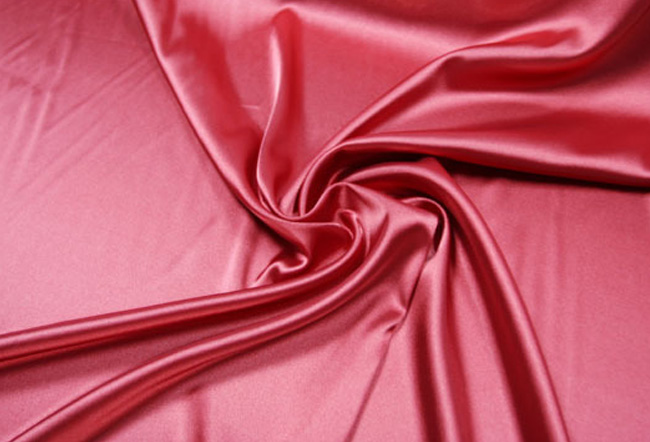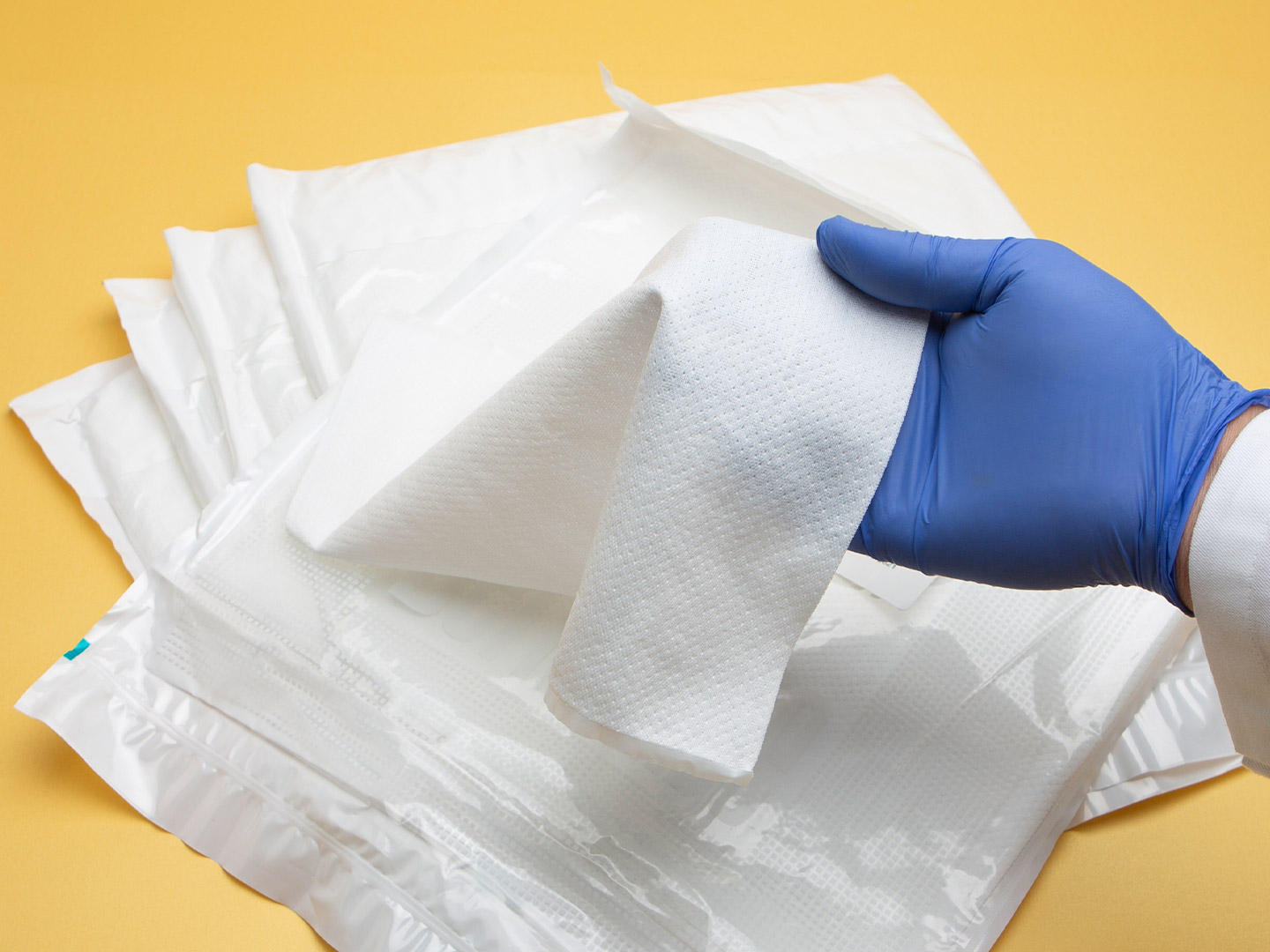It is mainly located on the back side of the fabric to be covered, pocket cloth and padding material parts, such as the front, back, sleeve lining, etc...
Underlining fabric.
Definition - Sewn on the inside of a garment to prevent saves and seams on the right side of sheer (translucent) fabrics and to provide support for loose fabrics.
The types of underlining fabric.
There is no specific type of underlining fabric, depending on what kind of fabric you are making the garment with. The fabric is chosen based on its ability to keep the garment vertical. For example, if you want to use a lace fabric as a base fabric, then satin, crepe or lining are good materials."
What is the Role of the Lining?
The lining plays the role of lining, fixing and anti-permeability.
Makes the garment soft inside, comfortable to wear, and easy to slip on and off.
Keeps the garment beautiful and hides seams, padding, and interfaces.
Reduces the friction between the fabric and the underwear, and plays a role in protecting to the fabric.
Adds a luxurious touch to the garment and raises the grade of the garment.
Improves the structure of the garment, keeping the garment flat and stiff.
Increases the thickness of the garment to play a warming role and enhance durability.
What are the Best Fabric Lining Materials?
Choose the best lining fabric for your garment or curtain lining. Some of the most popular fabrics are silk, viscose, acetate, polyester and rayon. The key to choosing the best lining fabric for your garment is to understand the type of fiber used to make the fabric. This is important because the fibers affect how the lining feels against your skin, the way it hangs and stitches, and its ability to allow moisture to pass through the material.
There are three main types of fibers to consider when choosing the best lining fabric for your clothing. They include natural, man-made and synthetic fibers.
Natural fibers
Silk lining
It is soft and comes in a variety of forms such as sheer, translucent, opaque, lusterless, or shiny. One of the most commonly used and readily available linings is silk habotai, also spelled habutai or habutae. Originally woven in Japan, it is now commonly woven in China. This is why it is also known as Chinese silk or Chunya textile. It is a light and smooth silk fabric with an elegant luster. Because of its translucent sheen, it is often used as a lining for delicate textiles such as summer shirts, underwear, kimonos, jackets, pants, and skirts. However, it does not smell good in warm weather and needs more attention. However, silk linen is expensive.
Cotton lining
This is a soft and breathable fabric. It is machine washable and feels good on the skin. Cotton's low cost and accessibility make it a popular choice. But it tends to wrinkle and shrink after washing, and is not very smooth. Sewing tip: Wash the cotton lining before sewing it under the garment.
Wool lining(Animal fiber)
Wool and insulated clothes that are both breathable and soft.
Man-made fiber
Copper ammonia lining
Cupro or "cupra" is a man-made fiber. It is also known as "Bemberg" because it is owned by the JP Bemberg Company. The Chinese fashion retail industry website calls it "ammonia silk". It is similar to silk and cotton, which is a good combination. It's durable, breathable, anti-static, smooth like silk, and more affordable than silk. Copper ammonia lining is commonly used in men's jackets, undershirts and pants. In addition, it is lightweight, making wool suits comfortable and breathable. The fabric is suitable for all seasons, cool in summer and warm in winter. However, it tends to stain easily and the fabric is not sturdy.
Acetate lining
It is less glossy than polyester, generates static electricity and is suitable for breathing. However, it wears easily, wrinkles easily and has poor water absorption.
Synthetic fiber
Polyester lining
Polyester lining is shiny, soft, strong, wrinkle-resistant, machine washable, and inexpensive. At the same time, it has an odor and is irritating and uncomfortable in hot weather.
Viscose and rayon lining
These fabrics are breathable, antistatic, soft as silk, and drape well. However, they wrinkle easily and are likely to shrink after washing."
How to Choose the Best Lining Fabric?
The above is an introduction to the best and common materials and features of lining. So how do we choose the right lining to make clothes or curtain lining? Here are 6 factors that can be used as reference conditions.
Factor 1. Type of clothing
The first thing you need to consider is what type of clothing you have. Casual clothing can use a casual lining such as cotton, rayon or viscose. However, formal wear may require a more advanced lining such as silk, especially if it will be something you will only wear on certain occasions. Curtains are made of linen, polyester, flannel, gauze weave, etc.
Likewise, if you are making a dress, jacket, suit or coat, some linings are more commonly used or better suited for these garments than others. The above guidelines can help you narrow down the range of lining fabrics.
Factor 2. Breathability
Another factor you'll want to consider is breathability. Remember, the lining will be the part of the garment that is closest to the skin. If the main fabric of the garment is not breathable, then you may need a lining to keep the fabric from feeling stuffy. The most breathable fabrics are cotton, rayon, viscose and silk.
If the main fabric of the garment is breathable and it's cold outside, you may want to choose a less breathable lining that will keep you insulated. Wool is both breathable and insulating, so it's a good all-around choice. But if you want a less breathable fabric, then look for a synthetic option like polyester or acetate.
Factor 3. Comfort
One of the purposes of a lining is to make a garment more comfortable, so you want to choose a lining that serves that purpose. This is important if the main fabric used to make the garment is not the most comfortable, or if the garment has many internal seams that could potentially rub against you.
All of the linings mentioned above can be comfortable, but some linings are more comfortable than others. For example, wool is not the most comfortable for some people, nor is polyester. Cotton, rayon, viscose and silk tend to be the most comfortable, but they have drawbacks in other areas."
Factor 4. Weight
What needs to be considered is the weight of the garment and the weight of the lining material. If the garment and lining are too heavy, the garment will be less comfortable to wear. Likewise, if the lining is too heavy, it may cause the garment to stretch or lose its shape.
In other words, you may not want to make a heavy garment heavier, so choose a lightweight lining. Or, if the outer fabric is light, then you'll want to choose a lighter fabric as well. Of the lining materials mentioned above, silk, acetate, rayon and viscose are the lightest. Cotton and polyester can have light or medium weights, so choose carefully. Fabrics such as fleece and wool tend to be the heaviest as far as weight is concerned.
Factor 5. Color
Lining materials come in many different colors and patterns, but the exact color or pattern you choose is up to you. The color or pattern of the lining is more of a fashion statement than a function of the garment.
That being the case, you can choose a lining that matches your jacket, either in a similar color or a neutral color. Or, you can play around and choose a lining in a different color or pattern. It just depends on your own style preferences. However, it's worth noting that different types of fabrics will come in different colors and patterns, so your options for certain fabrics may be limited.
Factor 6. Cost
Finally, consider the cost of the fabric, as some lining fabrics are significantly cheaper than others. You want to make sure you choose a fabric that fits both your budget and the garment. Cotton, polyester and acetate tend to be the cheapest. Rayon, viscose and cupro tend to fall somewhere in the middle as far as price is concerned. Finally, silk and wool are the most expensive lining fabrics.
Keep in mind that in most cases, the lining will not be seen. So it's okay to use a less expensive material that has similar characteristics to the more expensive one, especially if you want more durability. Most people won't know the difference."
Conclusions.
The above introduction of the lining fabric is finished. If you want to buy more lining fabric in different colors, sizes and compositions, please feel free to contact us at [email protected]. G&F Group is a professional China garment lining fabric manufacturer. Established in 1997, we have been exported to 80+ countries and are trusted and loved by overseas customers. Welcome to come to consult.
All Rights Reserved: https://www.groupgf.com/info-detail/lining-fabric
Copyright Notice: This is an original (translated) article from G&F Group Inc., please indicate the source from G&F Group Inc... If there is any infringement, please contact us first.

 Nonwovens in daily life ----- automotive
Nonwovens in daily life ----- automotive
 What is SAP – superabsorbent polymers
What is SAP – superabsorbent polymers
 The Future of Global Nonwoven Wipes to 2029
The Future of Global Nonwoven Wipes to 2029
 C.K. Wong, Nonwovens Industry Pioneer, Passes Away in Hong Kong
C.K. Wong, Nonwovens Industry Pioneer, Passes Away in Hong Kong